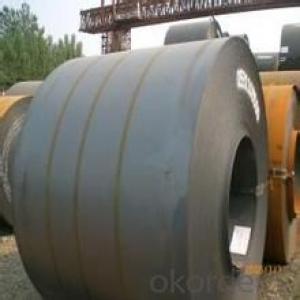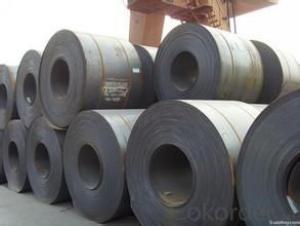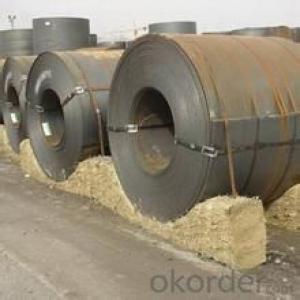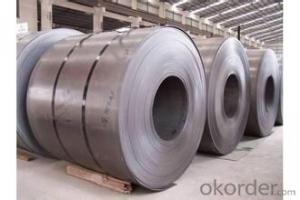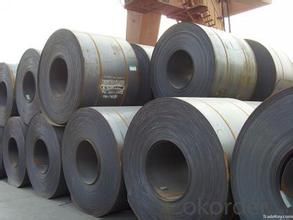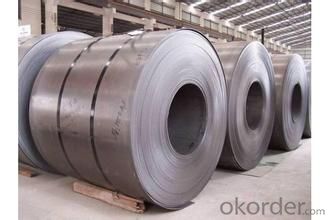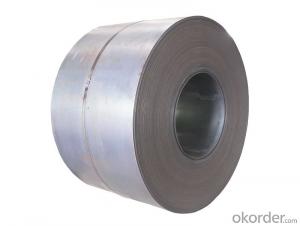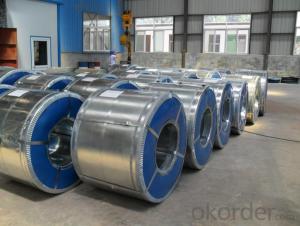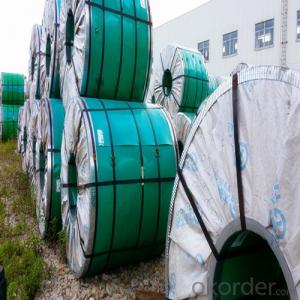Hot Rolled Steel Sheet in Coil in Good Quality
- Loading Port:
- Tianjin
- Payment Terms:
- TT OR LC
- Min Order Qty:
- 100 m.t.
- Supply Capability:
- 500000 m.t./month
OKorder Service Pledge
OKorder Financial Service
You Might Also Like
Rolled to its final dimensions while it’s hot enough to scale, our hot-rolled steel is an amalgamation of the various qualities of steel. It can be in the form of plates, sheets and coils. Our Hot-Rolled Steel Sheets and Coils are applied to a wide range of uses such as automobile, electrical appliance, machinery manufacturing, container manufacturing, shipbuilding, bridge, pipeline, and receive high acclaim from our customers for its excellent quality.
Product Description:
Product: | Hot Rolled Steel Coils/Sheets |
Material: | Q195,Q235,A36,SS400,S235JR,Q345,ST37-2, CCSB etc |
Standard : | JIS G3002 GB/T251B |
Technique: | hot rolled |
Thickness | 1.2mm to 200mm |
Tolerance of thickness: | :+/-0.03mm |
Width: | 750mm-2000mm |
Tolerance of width: | :+/-5.00mm (aiming to +/-2.00mm) |
Normal width: | 914mm, 1000mm, 1200mm, 1219mm, 1250mm,1500mm |
Length: | According to requirement |
Coil ID: | 508mm-610mm |
Coil Weight: | 10-25 Metric Tons |
Surface: | Black, Chromate, fingerprint resistant treatment, slight oiled or non-oiled, dry |
Port of Loading: | Tianjin/Shanghai port |
Packaging Details: | Standard export packing or according to the clients required |
Delivery Time | Within 30 days after received 30% deposit or workable L/C |
Payment Terms: | L/C,T/T |
- Q: What are the common methods of preserving steel coils?
- Some common methods of preserving steel coils include applying protective coatings, such as oil or paint, to prevent corrosion and rust formation. Another method is using VCI (Vapor Corrosion Inhibitor) paper or film, which releases chemicals that prevent oxidation. Additionally, steel coils can be stored in climate-controlled environments or wrapped in moisture-resistant materials to minimize exposure to moisture and humidity, which can accelerate corrosion.
- Q: Is Ace Steel's wrestling school still running?And do you know if their are any other wrestling schools in chicago?
- Steel Domain
- Q: Can steel coils be coated with decorative designs?
- Yes, steel coils can be coated with decorative designs. This is commonly achieved through various coating techniques like painting, powder coating, or laminating, which can add aesthetic appeal to the steel coils while enhancing their overall appearance and functionality.
- Q: What is the typical size and weight of a steel coil?
- The typical size and weight of a steel coil can vary depending on its intended use and industry standards. However, a common size for a steel coil is around 36 inches in width and weighs approximately 5 to 10 tons.
- Q: What are the factors influencing the price of steel coils?
- There are several factors that influence the price of steel coils. 1. Raw material costs: The price of steel coils is directly impacted by the cost of raw materials, such as iron ore and coal. Fluctuations in these commodity prices can greatly affect the overall price of steel coils. 2. Demand and supply: The supply and demand dynamics in the steel industry play a significant role in determining the price of steel coils. If there is a high demand for steel products, the price of steel coils is likely to increase. Conversely, if there is an oversupply of steel, prices may decrease. 3. Production and manufacturing costs: The cost of producing and manufacturing steel coils, including labor, energy, and transportation costs, can impact the final price of the product. Any changes in these costs can influence the overall price of steel coils. 4. Currency exchange rates: Steel is a global commodity, and its price can be influenced by fluctuations in currency exchange rates. If the currency in which steel is traded weakens against other currencies, it can result in higher prices for steel coils. 5. Government regulations and policies: Government regulations and policies, such as import tariffs, export restrictions, and environmental regulations, can impact the price of steel coils. These regulations can affect the cost of production and trade, ultimately influencing the price of steel coils. 6. Market competition: The level of competition among steel manufacturers and suppliers can also impact the price of steel coils. If there are multiple suppliers and manufacturers in the market, it can lead to competitive pricing, potentially driving down the price. On the other hand, if the market is dominated by a few suppliers, prices may be higher. It is important to note that these factors can vary over time and in different regions, ultimately affecting the pricing of steel coils in the market.
- Q: What are the different types of steel coil edge conditioning methods?
- There are several different types of steel coil edge conditioning methods, including slitting, cutting, shearing, and edge rolling. Slitting involves cutting the coil into narrower strips, while cutting involves separating the coil into smaller sections. Shearing is a process of cutting the edges of the coil to remove any irregularities or defects. Edge rolling is a method that involves rolling the edges of the coil to create a smoother and more uniform finish.
- Q: Why is steel used for building purpose and not any other metal?
- Steel is used for building purpose because of its steadfast quality. The steel has an intense resistance which renders it completely immune to dangers of corrosion, climatic variations, weather fluctuations and other environmental hazards, thereby making it the most suitable metal for exterior surface of the building. Internal structure of steel also helps the building to have strength at the core which enables it to stand erect for a longer time.
- Q: How are steel coils inspected for camber using laser profiling?
- Steel coils are inspected for camber using laser profiling, which is a non-contact measurement technique. Laser profiling involves the use of a laser beam that is emitted onto the surface of the steel coil. As the laser beam moves across the coil, it creates a profile of the coil's surface, capturing precise measurements. To inspect for camber, the laser profiling system scans the entire length and width of the coil, capturing data points at regular intervals. These data points are then analyzed to determine the deviation from a straight line, which indicates the presence of camber. During the inspection process, the laser profiling system compares the measured profile of the steel coil to a reference profile, which represents an ideal or straight surface. The deviation between the measured profile and the reference profile is calculated, and if this deviation exceeds a predetermined threshold, the coil is flagged as having camber. Laser profiling offers several advantages for inspecting steel coils for camber. Firstly, it provides a non-contact measurement, eliminating the need for physical contact with the coil and reducing the risk of damage. Additionally, laser profiling is highly accurate, capable of capturing even small deviations in the coil's surface. This ensures that camber is detected reliably, allowing for necessary corrective actions to be taken. Overall, the use of laser profiling for inspecting steel coils for camber ensures efficient and accurate detection of this defect, enabling manufacturers to maintain high-quality standards and deliver reliable products to customers.
- Q: Specifically, for the main support beam found in a basement.
- Talk to the supplier of both the products on what is involved in installation, weight bearing over the span you are trying to go without supports,the size of beam, will it affect the height of the room below or will the floor have to go up and the cost how much are you prepared to spend, you will then get your answer
- Q: What are the common coil surface treatments available for steel coils?
- The common coil surface treatments available for steel coils include galvanizing, galvannealing, electro-galvanizing, and painting.
Send your message to us
Hot Rolled Steel Sheet in Coil in Good Quality
- Loading Port:
- Tianjin
- Payment Terms:
- TT OR LC
- Min Order Qty:
- 100 m.t.
- Supply Capability:
- 500000 m.t./month
OKorder Service Pledge
OKorder Financial Service
Similar products
Hot products
Hot Searches
Related keywords
